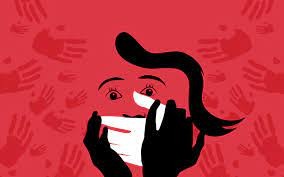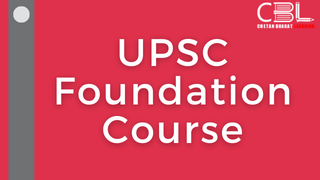
Important for UPSC, State PCS
Prelims: Women safety, National Crime Records Bureau (NCRB), UNICEF, NCRB, Cyber-violence, Cyber Crime Prevention against Women and Children (CCPWC), and Protection of Children from Sexual Offences Act 2012.
Mains: General Studies:- Sexual Harassment at Workplace, Measure Taken to Improve Women Safety, and laws relating to women safety in India.
Why in the news ?
Recently, a horrific crime occurred in Kolkata that shocked the nation.
A 31-year-old postgraduate trainee doctor at RG Kar Medical
College and Hospital was raped and murdered inside a
seminar hall on the hospital premises.
The day a woman can walk freely on the roads at night, that day we can say that India has achieved independence“ – Mahatma Gandhi
SEXUAL CRIMES AGAINST WOMEN IN INDIA
- Nirbhaya delhi gang rape case (2012):
- The 2012 Nirbhaya Delhi gang rape case refers to a brutal
incident that occurred on the night of December 16, 2012,
in New Delhi, India. - A 23-year-old physiotherapy intern, later named “Nirbhaya”
(meaning “fearless”) by the media to protect her identity,
was gang-raped and assaulted on a moving bus by six
men. Her male companion, who was with her, was also
severely beaten
Mumbai Shakti Mills Gang Rape (2013):
Incident: In August 2013, a 22-year-old photojournalist
was gang-raped by five men in the abandoned Shakti
Mills compound in Mumbai. The incident occurred when
she and a male colleague were on assignment.
Legal Outcome: The swift trial resulted in the conviction of
the perpetrators, with three of them being sentenced to
death under the newly introduced anti-rape laws.
Unnao Rape Case (2017):
Incident: A minor girl was raped in Uttar Pradesh. The
case gained national attention when the victim attempted
self-immolation in front of the Uttar Pradesh Chief
Minister’s residence in 2018 after facing harassment and
threats.
Significance: The case highlighted the misuse of power
and the difficulties faced by victims in obtaining justice,
especially when the accused are influential figures.
Hyderabad Veterinary Doctor Rape and Murder (2019):
Incident: In November 2019, a 26-year-old veterinary
doctor was raped, murdered, and then her body was
set on fire by four men near Hyderabad. The crime was
premeditated, with the perpetrators deflating her scooter
tire to create an opportunity for the attack.
Impact: This case reignited discussion on women’s safety,
leading to the demand for stricter laws and faster trials in
cases of sexual violence
Hathras Gang Rape (2020):
Incident: A 19-year-old Dalit woman was allegedly gangraped in Hathras, Uttar Pradesh, in September 2020. She
succumbed to her injuries two weeks later in a hospital in
Delhi.
Outcome: The case led to widespread condemnation
and demands for justice, bringing attention to the
vulnerabilities faced by Dalit women in India.

About Women Safety
- According to the National Crime Records Bureau (NCRB) 2021 data, India saw a total of 4,28,278 instances of crimes against women in 2021.
- As per the National Family Health Survey (NFHS-5), around 30% of women in India between the ages of 15-49 have experienced physical, sexual or domestic violence.
- Women safety involves strategies, practices and policies which aim to reduce violence against women, including women’s fear of crime.
- The most common forms of gender-based violence includes:
- Domestic violence including partner violence.
- Sexual violence including rape, sexual abuse, sexual exploitation and trafficking.
- Women safety in public spaces including public transportation.
- Other recurrent forms of violence are forced evictions from property, femicide, missing women, honor crimes, harmful traditional practices, violence against women in times of war, murder and gun violence.
Safety Issues Faced by Women in India:
- Domestic Violence:- Physical Abuse, Marital Rape
- Sexual Violence:– Rape , Sexual Assault, Child Sexual Abuse
- Street Harassment (Eve-Teasing):- Verbal Harassment,
Physical Harassment, Stalking - Workplace Harassment:- Sexual Harassment,
Discrimination - Cyber Harassment: Revenge, Online Abuse
- Cultural Practices:- Honour Killings ,
Dowry-Related Violence, Victim-Blaming , Deep-Rooted Patriarchal Norms .
The Enduring Fight for Equality: A Chronological Look at
India’s Women’s Movements
The fight for women’s rights in India is a long and arduous journey, marked by distinct phases of
activism, reform, and evolving ideologies. This section delves into the historical trajectory of the
women’s movement in India, highlighting its key milestones and the changing objectives over
time.
stage 1: Reform and Anti-Colonial Struggles (Late 19th – Mid
20th Century)
Reformist Movements
- Savitribai Phule and Ishwar Chandra Vidyasagar spearheaded campaigns against Sati (widow
burning) and child marriage. - Educational Empowerment: Jyotirao Phule established the first girls’ school in India in 1848.
- Key Organisations:
o Brahmo Samaj: Founded by Raja Rammohun Roy, fought for the abolition of Sati.
o Arya Samaj: Championed women’s empowerment.
Anti-Colonial Struggles - Integration with Independence Movement: Women played a crucial role in the Indian
independence movement, with Mahatma Gandhi mobilizing them for swaraj (self-rule). - Significant Organisations:
o All India Women’s Conference (1927): Advocated for political participation and social
reforms.
o Women’s Indian Association (1917) : Focused on women’s suffrage, education, and social
reform.
stage 2: The Quest for Legal and Social Equality (1960s – 1980s)
- Legal and Social Reforms
- Towards Equality Report (1974): Exposed the stark realities of women’s lives,
highlighting issues like declining sex ratio, economic marginalization, and discriminatory
personal laws. This served as a catalyst for further action.
o Vina Mazumdar and Lotika Sarkar, played a key role in compiling this
groundbreaking report.
2. The Rise of Autonomous Women’s Groups (1970s-1980s): The 1970s and 80s saw a surge of
autonomous women’s groups, independent from state control. These groups tackled a
diverse range of issues critical to women’s empowerment:
- Economic Empowerment: Pioneering organizations like the Self-Employed Women’s
Association (SEWA), championed the cause of women workers in the informal sector,
providing them with training, skill development, and access to credit.
- Legislative Reforms: Women’s organizations actively lobbied the state for legislative Student Notes:
reforms.
o The All India Democratic Women’s Association (AIDWA), for instance, played a crucial
role in advocating for women’s political rights and equal opportunities. - Legal Support: Organizations like the All India Muslim Women’s Personal Law Board
(AIMWPLB) and Bhartiya Muslim Mahila Andolan (BMMA) provided vital legal aid. They
also provided support to Muslim women facing issues related to marriage, divorce,
property rights, and child custody.
o The landmark Shah Bano case, where a Muslim woman fought for maintenance after
divorce, is a prime example of their work.
3. Cooperative movements: Cooperative societies like Shri Mahila Griha Udyog (Lijjat Papad)
not only provided women with employment opportunities but also empowered them
through collective ownership and decision-making.
stage 3: Decentralization and Grassroots Activism (1990s –
Early 2000s)
Grassroots Movements: The 1990s witnessed a shift towards decentralization and grassroots
activism.
- Constitutional Amendments: The 73rd and 74th amendments (1992) mandated 33%
reservation for women in Panchayats and Municipalities. - NGO Rise: Women-led NGOs provided support networks and legal aid.
Diverse Movements - Dalit and Marginalized Women: This phase also gave rise to movements addressing the
specific needs of Dalit women and other marginalized communities. These movements
challenged the notion of a singular “womanhood” and highlighted the intersectionalities of
gender, caste, and class.
Digital Feminism: The advent of the digital age ushered in a new era of activism. Social media
platforms like Twitter became fertile ground for movements like #MeToo, which highlighted
issues of sexual harassment and abuse. - The online space broadened the agenda of the women’s movement, bringing issues of
LGBTQ+ rights, body autonomy, and mental health to the forefront.
Government initiatives and schemes for socio-economic empowerment of women:
- As per the Economic survey 2024:
- India is transitioning from women’s development to women-led development
Gender Budget - The share of the Gender Budget in the total Union Budget has increased to 6.5% in Financial Year 2025, the highest since the introduction of Gender Budgeting Scheme in Financial Year 2006.
Social Empowerment - Beti Bachao, Beti Padhao: Emphasis on cherishing, educating, and saving for the girl child.
- Maternal mortality rate declined from 130/lakh live births (2014-16) to 97/lakh live births
(2018-20). - Institutional deliveries increased from 78.9% (2015-16) to 88.6% (2019-21).
- PM Matru Vandana Yojana provides cash incentives for the birth of the first and second child (female), encouraging proper rest for new mothers.
Nutritional Security - Mission Saksham Anganwadi & Poshan 2.0 addresses malnutrition in pregnant women, lactating mothers, children, and adolescent girls.
- Focus on health, wellness, and immunity through micronutrient sufficiency.
- Anganwadi centers upgraded to Saksham Anganwadis with modern facilities and educational tools.
- Participation of Panchayat and women’s collectives enhances accountability in nutrition programs. Access to Basic Necessities
- Swachh Bharat Mission: Construction of toilets.
- Ujjwala Yojana: Provision of clean cooking gas connections.
- Jal Jeevan Mission: Provision of tap drinking water connections.
- These initiatives reduce women’s drudgery and care burden, freeing up time for productive work. Safety and Legal Aid
- Sambal: One-stop centers offer medical and legal aid, police facilitation, temporary shelter, and counseling for women affected by violence.
- 24-hour toll-free women’s helpline ‘181’ provides prompt response on government schemes and emergency services. Education and Skilling
- Jan Shikshan Sansthan (JSS) Scheme: Women constitute about 82% of the total beneficiaries.
- Women in Science and Engineering (WISE KIRAN) boosts female involvement in STEM fields.
- Initiatives like Vigyan Jyoti and exclusive research grants for women scientists under CSIRASPIRE aim to enhance women’s participation in scientific research.
Political Empowerment
- Nari Shakti Vandan Abhiniyam, 2023 aims to increase women’s political participation.
- Reservation for women in Panchayats has led to greater investment in public goods related to women’s concerns and improved child health and education outcomes.
Economic Empowerment
- PM Jan Dhan Yojana: 55.6% of account holders are women.
- Deendayal Antyodaya Yojana-NRLM: Empowers women through Self-Help Groups (SHGs).
- Entrepreneurship: High female participation in PM Mudra Yojana and Stand-Up India.
- Equality in Asset Ownership Female ownership of land and assets is crucial for financial security and economic
opportunities.
PM AWAS Yojana mandates female ownership of houses to promote gender equity
What Should be the way Forward?
Police reforms
Judicial reforms
Training and capacity building
Establishment of rape Crisis centres
Sensitivity on part of Media
Civil society participation
CBL Practice Questions for Prelims
Which initiative was launched by the Ministry of Women and Child Development to ensure safety for women in public spaces?
A) Beti Bachao Beti Padhao
B) Nirbhaya Fund
C) Mahila E-Haat
D) Pradhan Mantri Ujjwala Yojana
Answer: B) Nirbhaya Fund
CBL Mains Practice Question
Critically examine the influence of cultural norms and practices on women’s safety in India. How can these be transformed to create a safer environment ?




Leave a Reply
You must be logged in to post a comment.